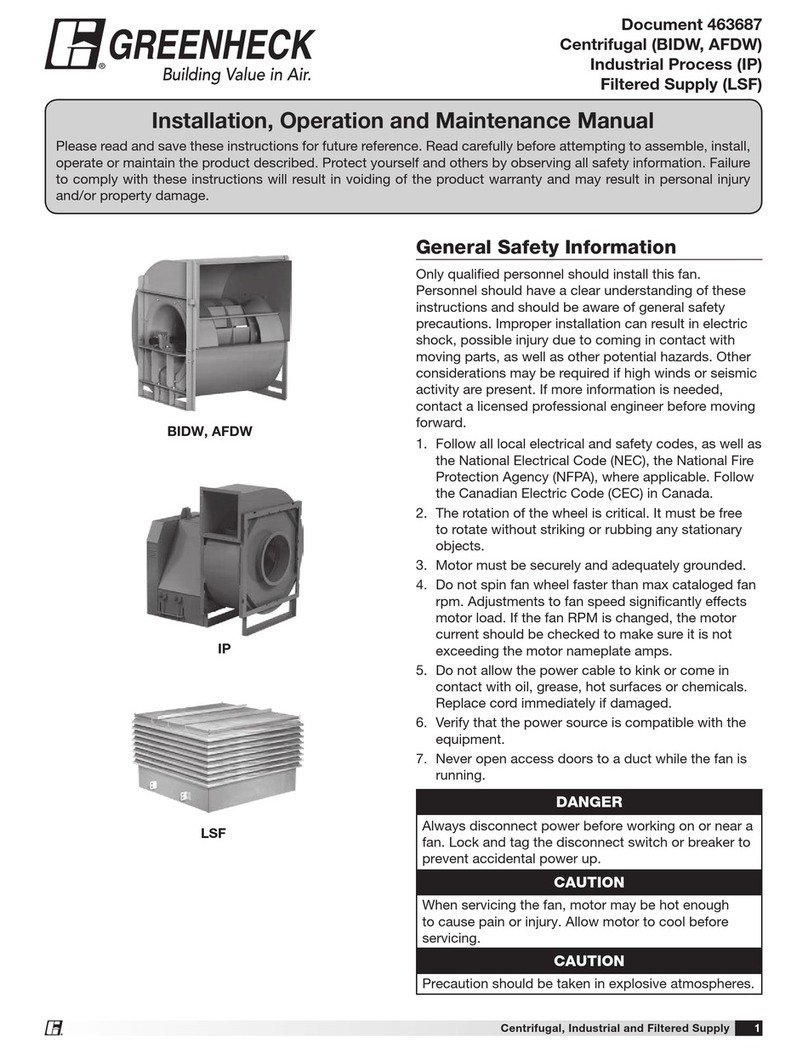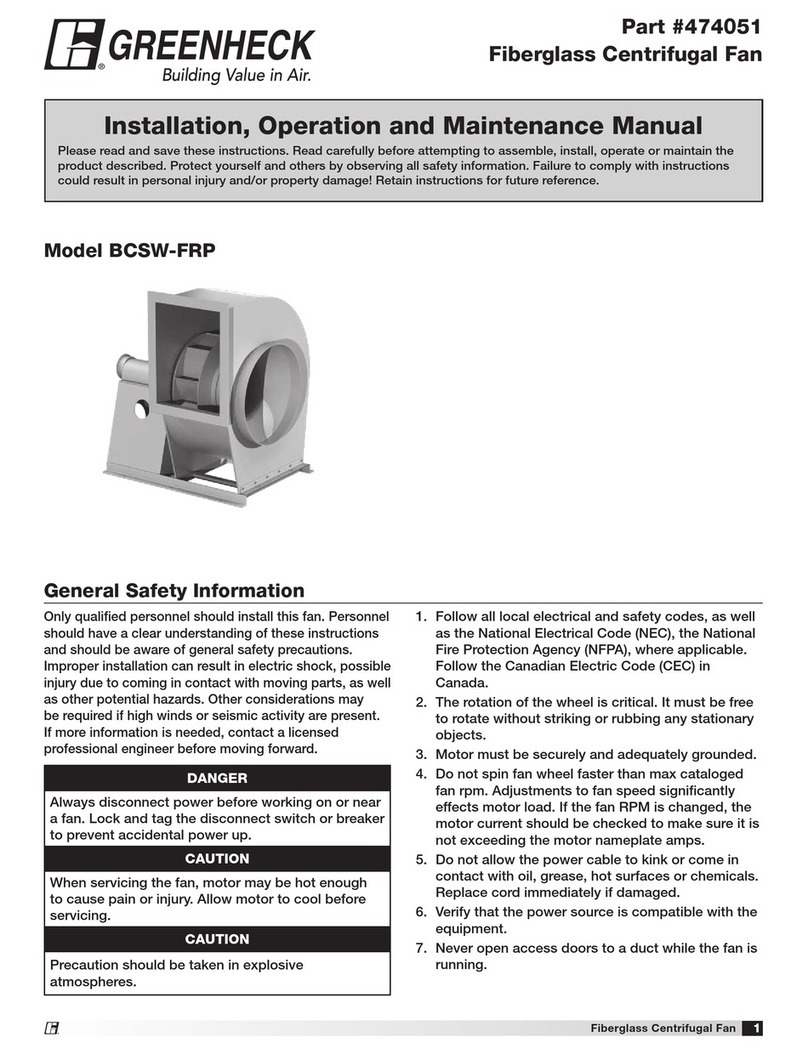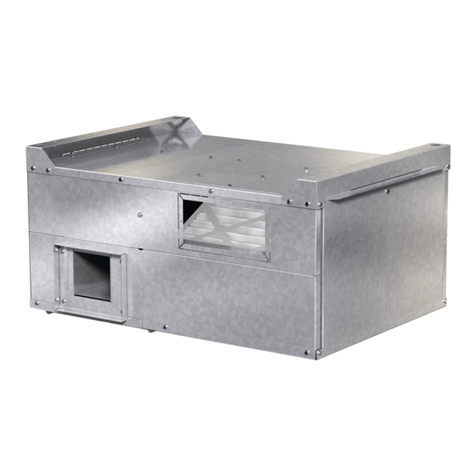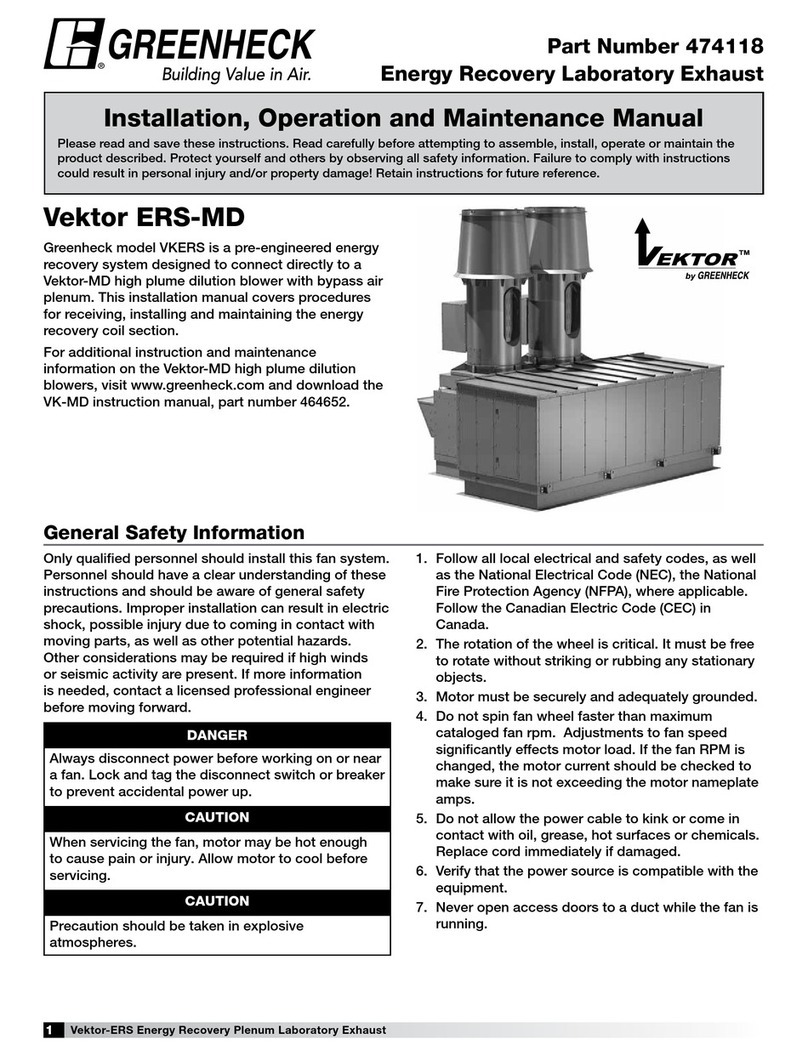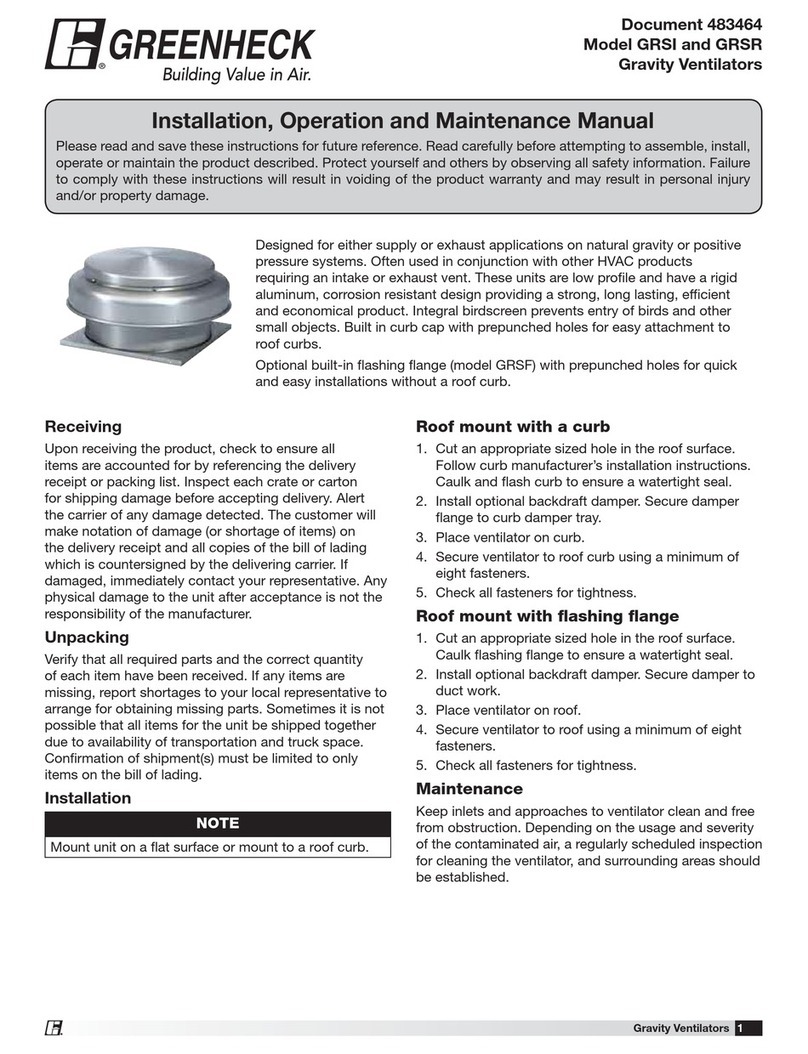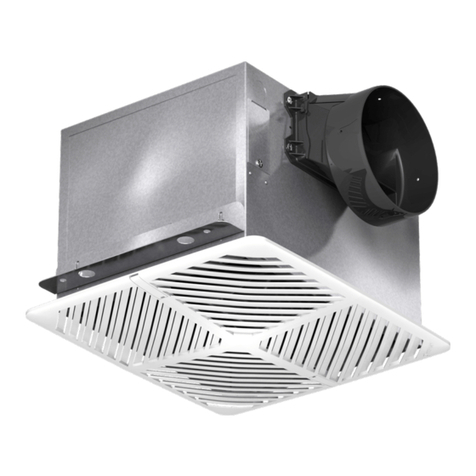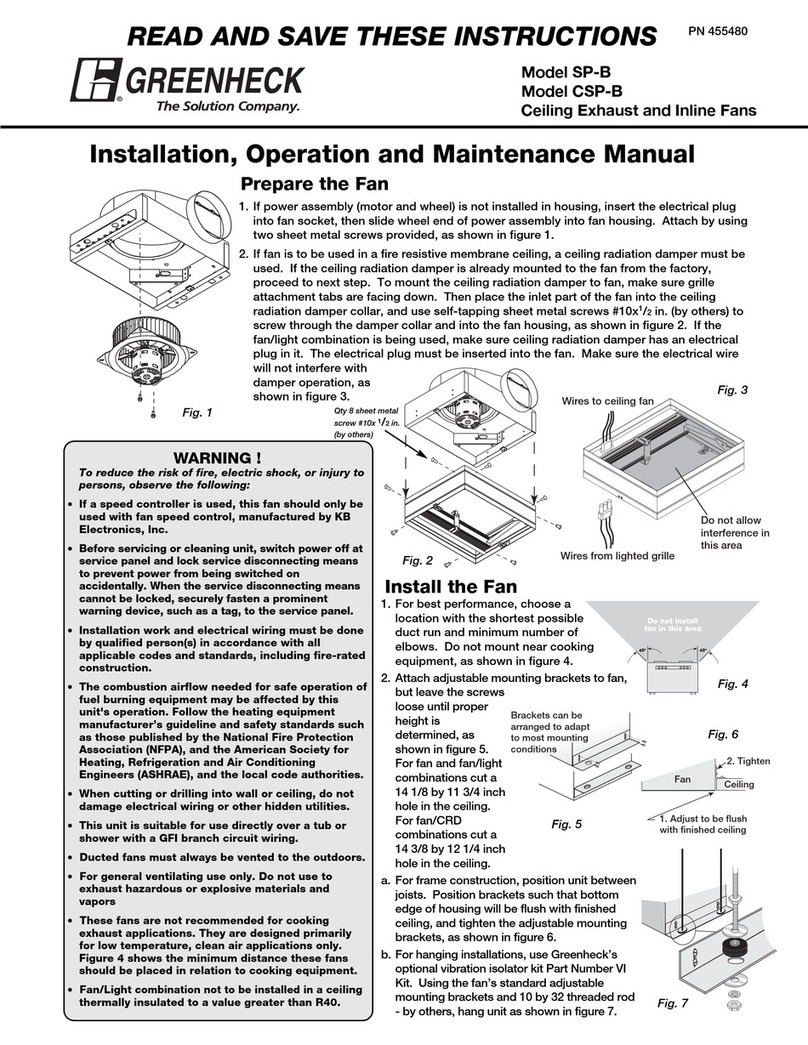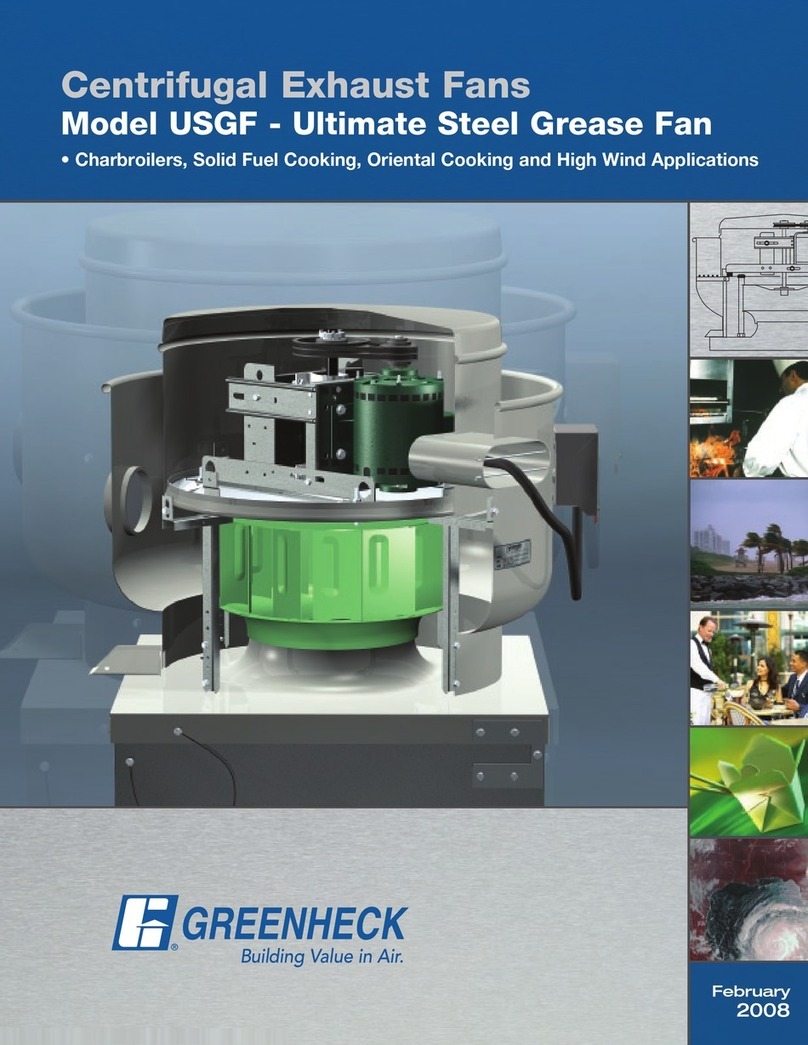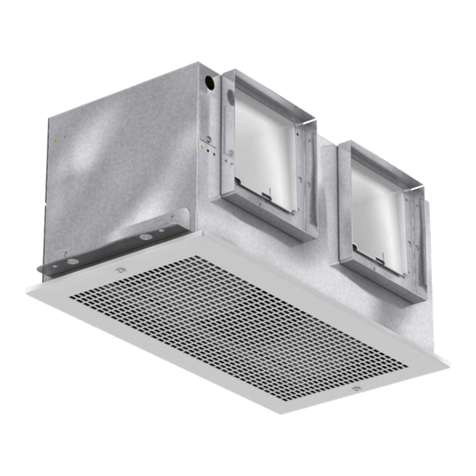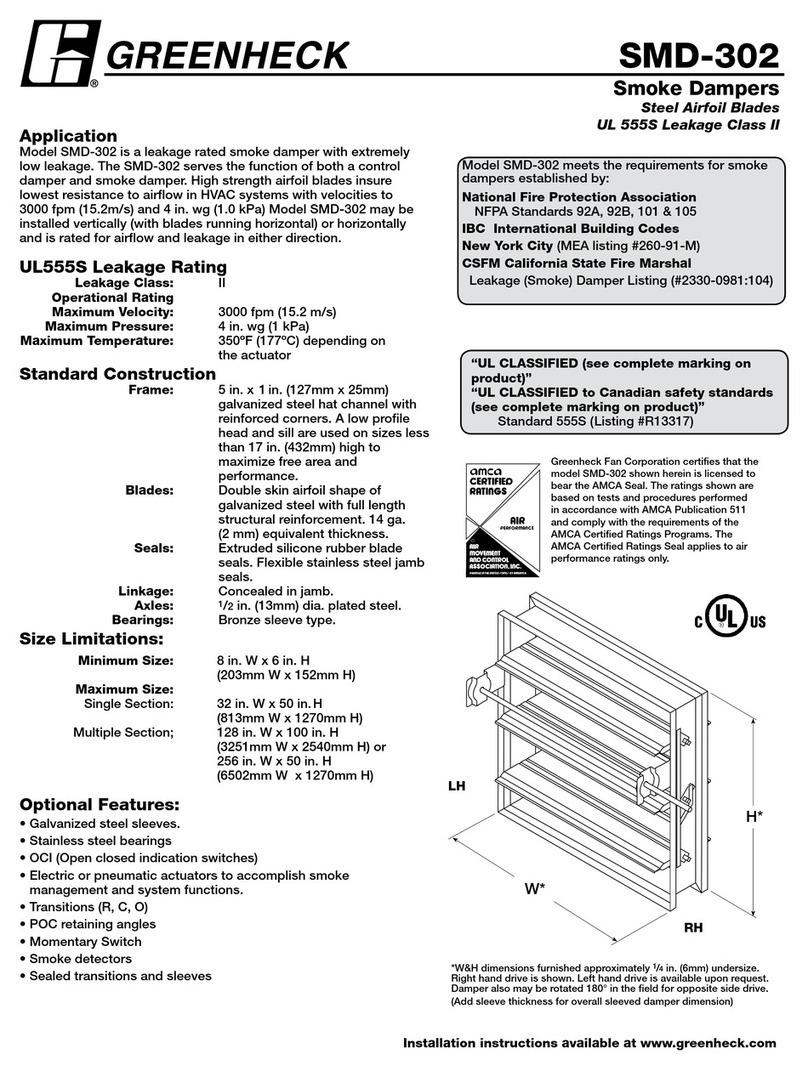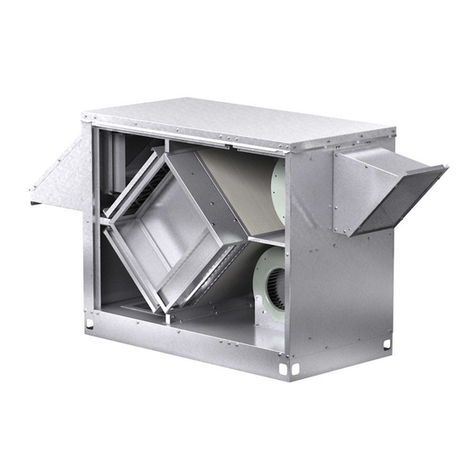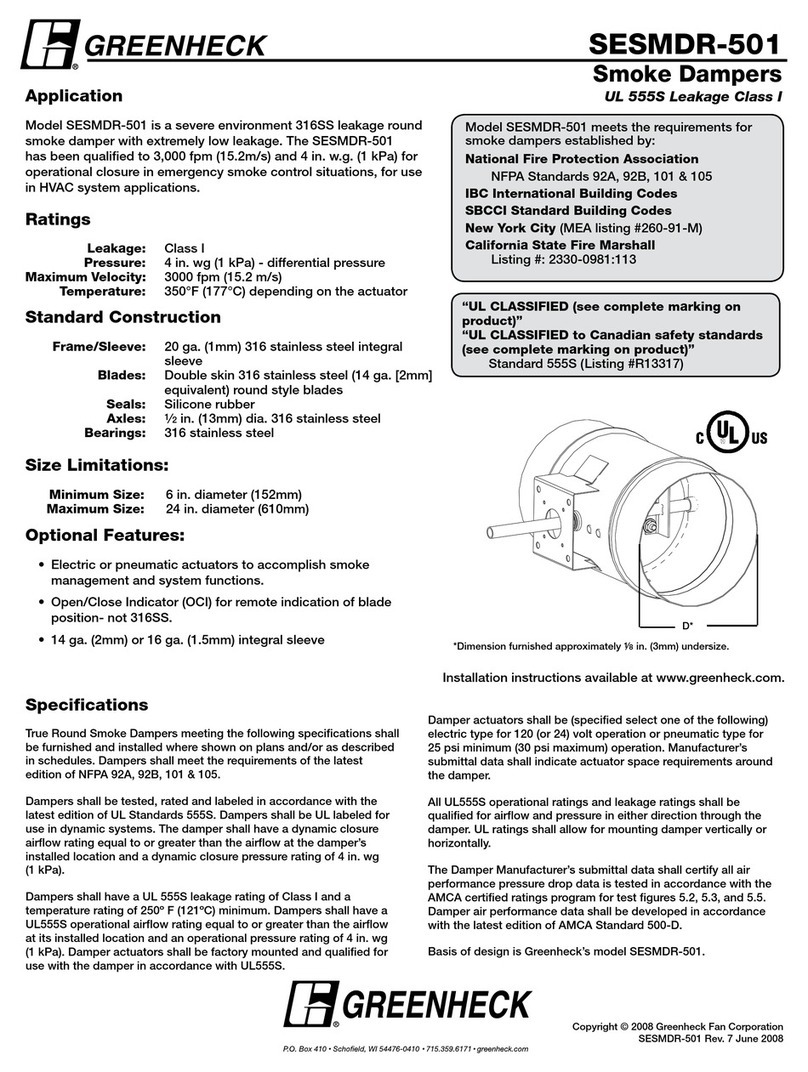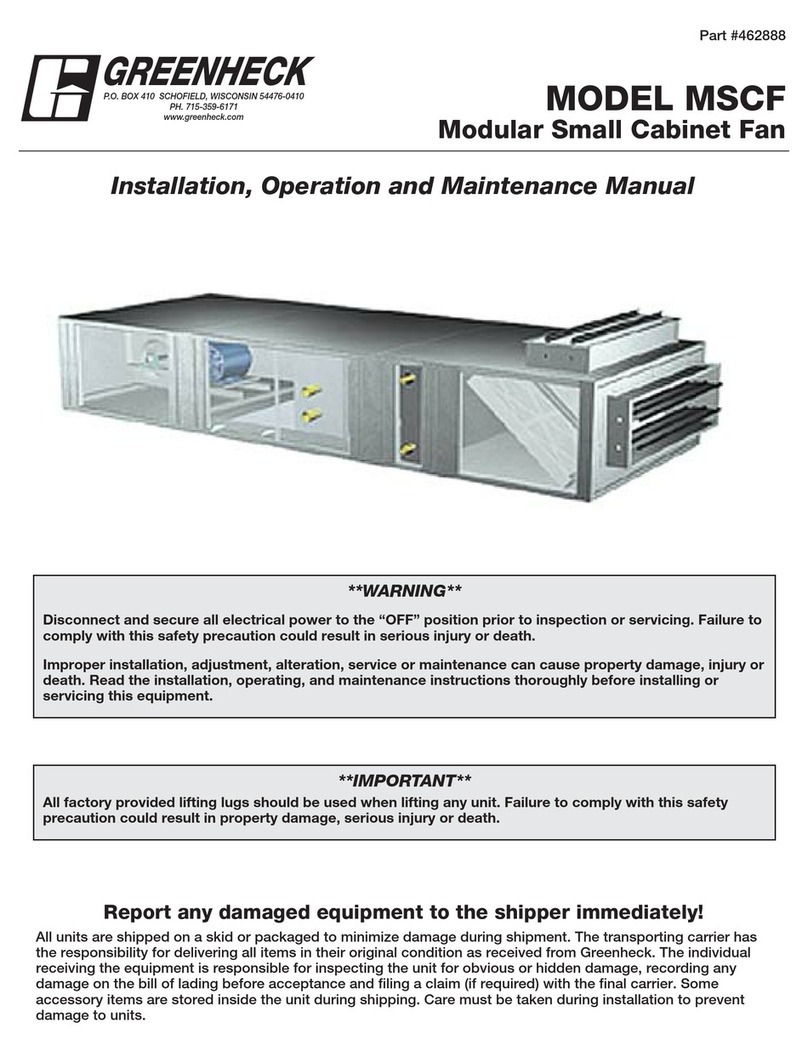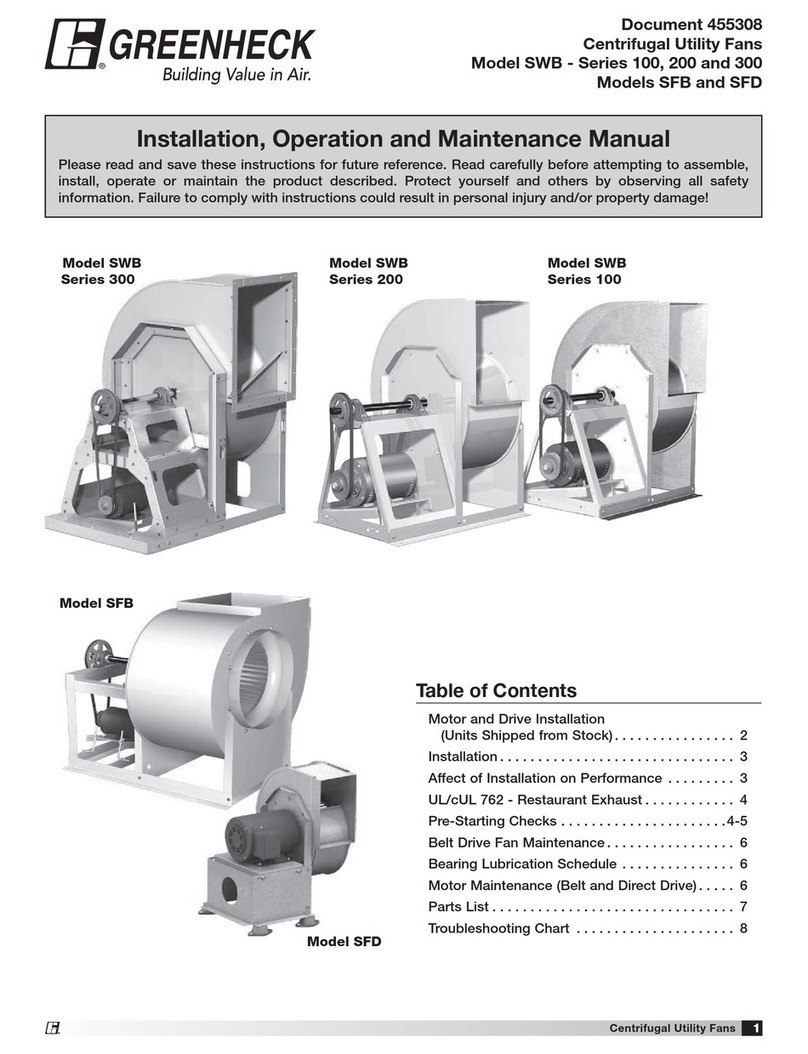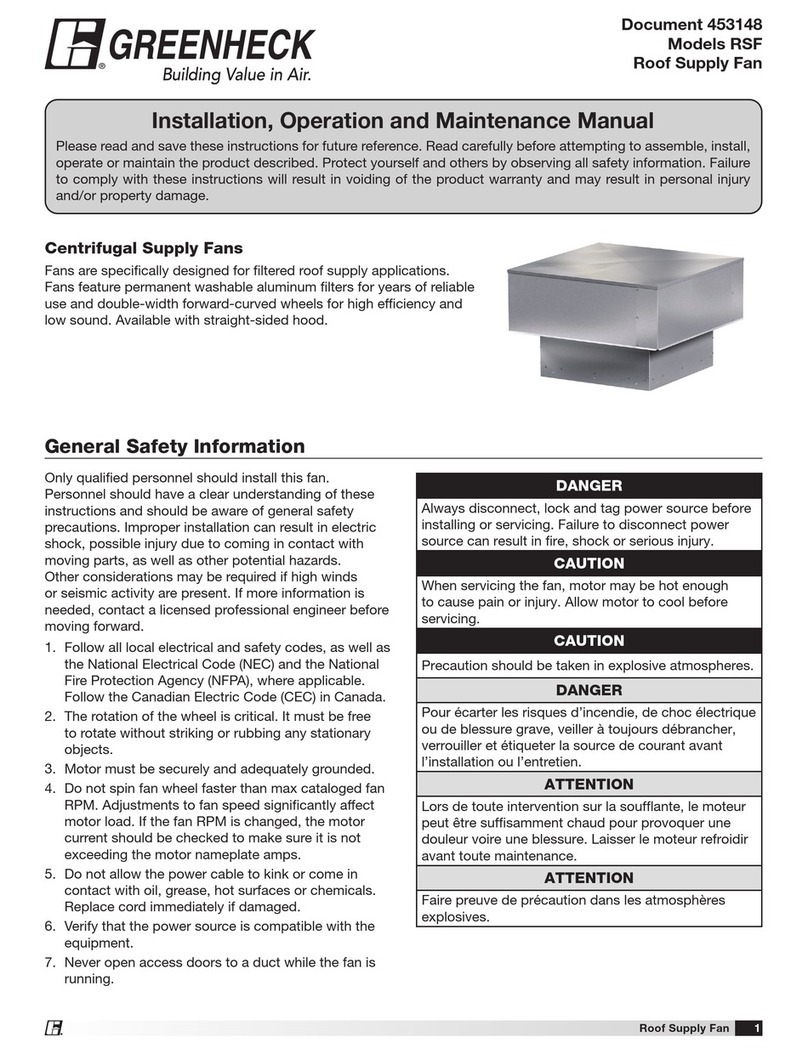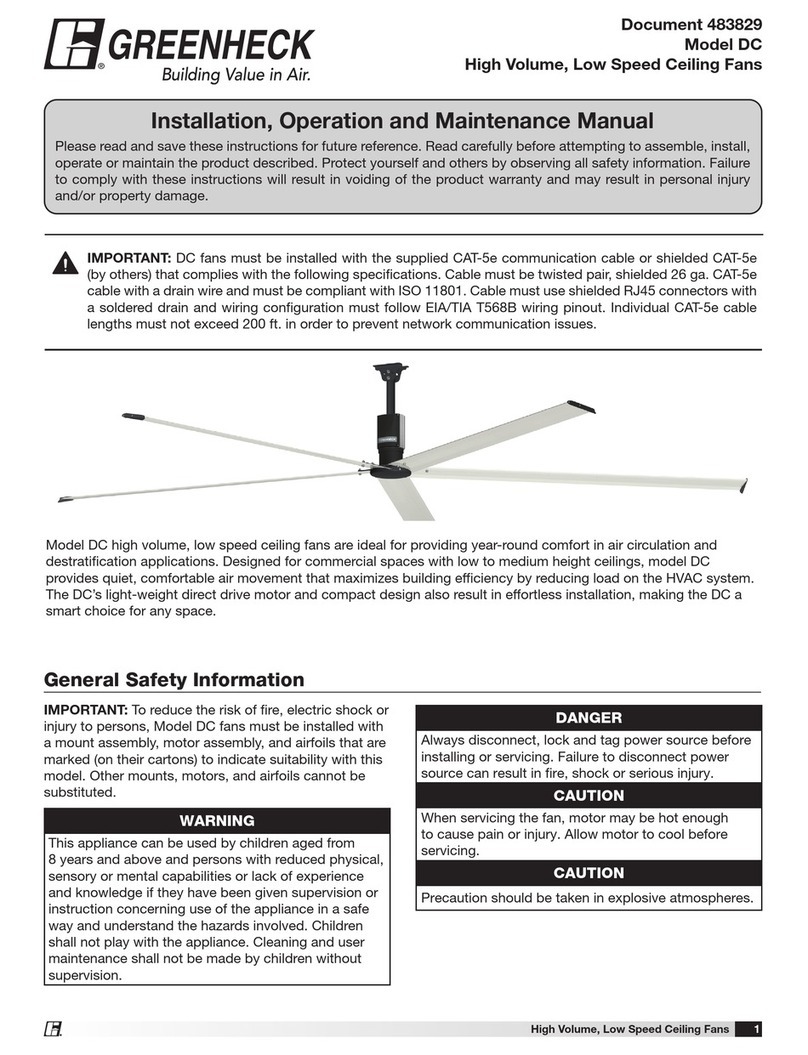6
Airflow System Start-Up
For proper unit function and safety, follow everything in this start-up procedure in the order presented. This is
to be done after the electrical connections are complete.
1. Check Voltage
Before starting the unit compare the supplied
voltage with the units nameplate voltage and the
motor voltage.
2. Check Blower Rotation
If the blower is rotating in the wrong direction, the
unit will move some air but not perform properly.
To check the rotation, open the blower access
door and run the blower momentarily to determine
the rotation.
To reverse the rotation, turn the power off and use
the following procedure:
• For single phase units,
rewire the motor per
the instructions on
the motor.
3. Check for Vibration
Check for unusual noise and vibration. Excessive
vibration maybe experienced during initial start-
up. Left unchecked, excessive vibration can
cause a multitude of problems, including
structural and/or component failure. Many
conditions can be discovered by careful
observation. If the problem is wheel unbalance,
in-place balancing can be done providing there is
access to the fan wheel. Generally, fan vibration
and noise is transmitted to other parts of the
building by the ductwork. If noise is an issue, we
recommend using heavy canvas connections on
the inlet of the fan. Refer to the “Troubleshooting”
section of this manual if a problem develops.
4. Air Volume Check and Measurement
Along with the building balance, the units air
volume (cfm) should be measured and compared
with its rated air volume. This unit is flexible for
varying air volume, but the actual air volume
should be known for making final adjustments.
The most accurate way to measure the air volume
is by using the pitot traverse method in the
ductwork away from the blower. Other methods
can be used but should be proven and accurate.
To adjust the air volume, change the fan rpm or
the system losses. See Troubleshooting section in
this guide.
5. Measure Motor Voltage, Amperage and
Fan rpm
All access doors must be installed. Measure and
record the input voltage and motor amperage(s).
To measure the fan rpm, the blower door will need
to be removed. Minimize measurement time
because the motor may over amp with the door
removed.
Compare measured amps to the motor nameplate
full load amps and correct if over amping. See the
Troubleshooting section in this guide.
Pre-Start Check List
1. Disconnect and lock-out all power switches to
fan.
2. Check all fasteners, set screws and locking
collars on the fan, motor base and accessories
for tightness.
3. Rotate the fan wheel by hand and assure no
parts are rubbing.
Special Tools Required
• Voltage meter
• Tachometer
• Amperage meter
Speed controls may be used on Model VFCD fans for
manual adjustment of the fan’s performance (for final
system balancing) or to control the fan’s output in
confined spaces, such as conference or meeting
rooms. The fan can be adjusted to 60% of design
airflow with a speed control. This reduction in airflow
and fan speed is also accompanied by a reduction in
noise level. Solid state speed controls are available for
a range of applications up to 15 amps. Speed controls
can be used to operate more than one fan if the
combined total amperage of the fans does not exceed
the control rating.
Model 5WSSC - For use w/ shaded pole and PSC motors.
• Rated for 115 - 127V, 5 Amp • UL Listed
• Require a 2x4 handy box
Model 5W240 - For use w/ shaded pole and PSC motors.
• Rated for 220 - 240V, 5 Amp • UL Listed
• Requires 2x4 handy box
Speed Controls
